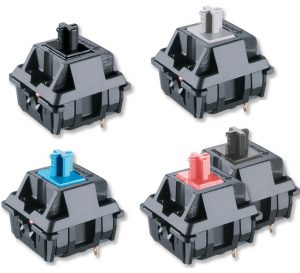The Total Overview to Membrane Switch Modern Technology and Its Applications
The Total Overview to Membrane Switch Modern Technology and Its Applications
Blog Article
Comprehending the Performance of Membrane Layer Switches Over for Interface Devices
The performance of membrane layer changes represents a substantial improvement in interface design, combining effectiveness with aesthetic convenience. These switches operate through a multi-layered structure that translates user interactions into electrical signals, permitting both small layouts and strength versus ecological variables. As markets increasingly prioritize user experience, comprehending the subtleties of membrane layer switch technology comes to be necessary. What ramifications do these improvements hold for future applications, and how might they redefine customer interactions throughout numerous devices?
What Are Membrane Switches?
Membrane buttons are cutting-edge user interface devices that promote user communication with digital tools. These flexible parts include multiple layers, consisting of a graphic overlay, spacer, and a published circuit layer. The layout allows for a smooth assimilation right into different electronic devices, improving both the aesthetic and practical facets of customer interfaces.
Membrane switches are frequently utilized in a wide variety of applications, from home appliances to industrial machinery and medical tools. Their building and construction generally includes a slim account, making them an optimal selection for compact styles. The responsive responses provided by these switches can be crafted to fulfill particular customer choices, making certain efficient communication between the user and the tool.
Durability is an additional substantial benefit of membrane switches, as they are resistant to dirt, wetness, and chemicals, which enhances their life expectancy in requiring settings. Furthermore, these switches can be customized in terms of form, size, and visuals design, permitting for branding and user-specific features. Generally, membrane layer switches stand for a sensible service for improving individual experience in digital gadgets, integrating functionality with visual appeal in a reliable fashion.
How Membrane Switches Over Job
Operating on an uncomplicated concept, membrane layer switches utilize a split construction to register individual input efficiently. Each switch contains multiple layers, consisting of a printed circuit layer, a spacer layer, and a top visuals layer, which are made to collaborate effortlessly. When a user presses the top layer, it compresses the spacer layer, bringing the conductive aspects of the circuit layer right into contact with each other.
This call produces a shut circuit, signaling the device to carry out a particular feature. The style permits numerous setups, consisting of tactile responses, which can boost the user experience by offering a physical feeling upon activation. The materials utilized in membrane layer switches commonly include flexible substrates, such as polyester or polycarbonate, which make sure longevity and resilience versus deterioration.

Secret Benefits of Membrane Buttons

Another substantial benefit is their density. Membrane switches are slim and lightweight, which makes it possible for manufacturers to conserve space in their devices without compromising functionality. This attribute is particularly advantageous in applications where weight and quantity are important factors to consider.
Additionally, membrane switches are immune to dirt, wetness, and chemicals, improving their sturdiness. This strength expands their lifespan and reduces the need for constant substitutes, causing cost savings in time.
Moreover, the tactile responses offered by membrane buttons can be enhanced to enhance customer communication. They can consist of features such as elevated buttons or distinct clicks, improving functionality and customer experience.
Applications Throughout Industries
Interface tools utilizing membrane buttons prevail in a wide selection of markets, showcasing their adaptability and performance. Discover More Here Membrane Switch. In the medical field, membrane layer buttons are important to devices such as diagnostic equipment and individual tracking systems, where their durability and ease of cleansing are vital for preserving hygiene criteria. In the automotive market, these buttons are utilized in dashboard controls and infotainment systems, offering a streamlined and modern-day user interface for customers.
In addition, the consumer electronics market take advantage of membrane switches in appliances and portable tools, where portable style and easy to use interfaces improve customer experience. Industrial applications additionally take advantage of membrane layer changes for control panels in machinery and automation systems, stressing their effectiveness and resistance to harsh environments.
In the aerospace and defense markets, membrane buttons are used in cockpit controls and equipment, where reliability and efficiency under severe problems are critical. Additionally, the gaming industry significantly incorporates membrane switches in controllers and game equipments, contributing to an appealing user experience. Generally, the convenience of membrane changes enables their prevalent usage throughout numerous fields, emphasizing their significance in modern customer interface design.
Future Fads in Membrane Layer Switch Innovation

Additionally, making use of innovative materials, such as polycarbonate and polyester films, is expected to rise, giving enhanced resilience and resistance to environmental stress factors. These products add to the total long life of membrane buttons, making them appropriate for harsher industrial applications.
In addition, the incorporation of smart innovation, including IoT connection, will make it possible for membrane buttons like it to connect with other tools and systems, helping with a much more interactive user experience. This pattern lines up with the growing need for wise gadgets across various industries, from health care to customer electronic devices.
Finally, personalization options are expected to increase, allowing producers to produce bespoke options tailored to specific user demands and preferences. These growths will place membrane layer buttons as necessary elements in the evolution of interface technology.
Conclusion
In verdict, membrane layer changes stand for a crucial development in user interface innovation, using a trusted and flexible option for varied digital applications. Their layered building facilitates portable style, while features such as responsive responses additional info boost user interaction. The sturdiness versus environmental factors additionally strengthens their utility throughout multiple industries. As developments in product science and touch picking up innovations proceed, the capability and applicability of membrane layer switches are anticipated to increase, enhancing their significance in contemporary electronic gadgets.
Report this page